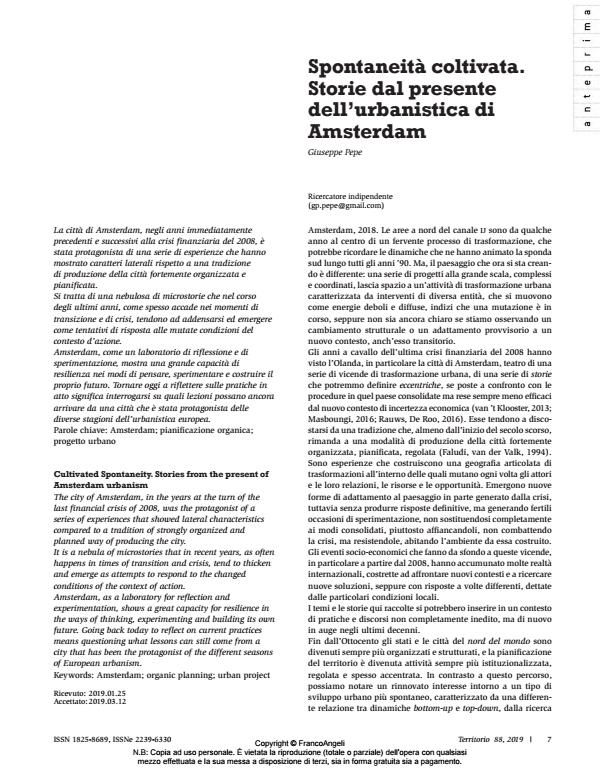Spontaneità coltivata. Storie dal presente dell’urbanistica di Amsterdam
Titolo Rivista TERRITORIO
Autori/Curatori Giuseppe Pepe
Anno di pubblicazione 2019 Fascicolo 2019/88
Lingua Italiano Numero pagine 18 P. 7-24 Dimensione file 537 KB
DOI 10.3280/TR2019-088001
Il DOI è il codice a barre della proprietà intellettuale: per saperne di più
clicca qui
Qui sotto puoi vedere in anteprima la prima pagina di questo articolo.
Se questo articolo ti interessa, lo puoi acquistare (e scaricare in formato pdf) seguendo le facili indicazioni per acquistare il download credit. Acquista Download Credits per scaricare questo Articolo in formato PDF

FrancoAngeli è membro della Publishers International Linking Association, Inc (PILA)associazione indipendente e non profit per facilitare (attraverso i servizi tecnologici implementati da CrossRef.org) l’accesso degli studiosi ai contenuti digitali nelle pubblicazioni professionali e scientifiche
La città di Amsterdam, negli anni immediatamente precedenti e successivi alla crisi finanziaria del 2008, è stata protagonista di una serie di esperienze che hanno mostrato caratteri laterali rispetto a una tradizione di produzione della città fortemente organizzata e pianificata. Si tratta di una nebulosa di microstorie che nel corso degli ultimi anni, come spesso accade nei momenti di transizione e di crisi, tendono ad addensarsi ed emergere come tentativi di risposta alle mutate condizioni del contesto d’azione. Amsterdam, come un laboratorio di riflessione e di sperimentazione, mostra una grande capacita` di resilienza nei modi di pensare, sperimentare e costruire il proprio futuro. Tornare oggi a riflettere sulle pratiche in atto significa interrogarsi su quali lezioni possano ancora arrivare da una citta` che e` stata protagonista delle diverse stagioni dell’urbanistica europea.
Parole chiave:Amsterdam; pianificazione organica; progetto urbano
Giuseppe Pepe, Spontaneità coltivata. Storie dal presente dell’urbanistica di Amsterdam in "TERRITORIO" 88/2019, pp 7-24, DOI: 10.3280/TR2019-088001